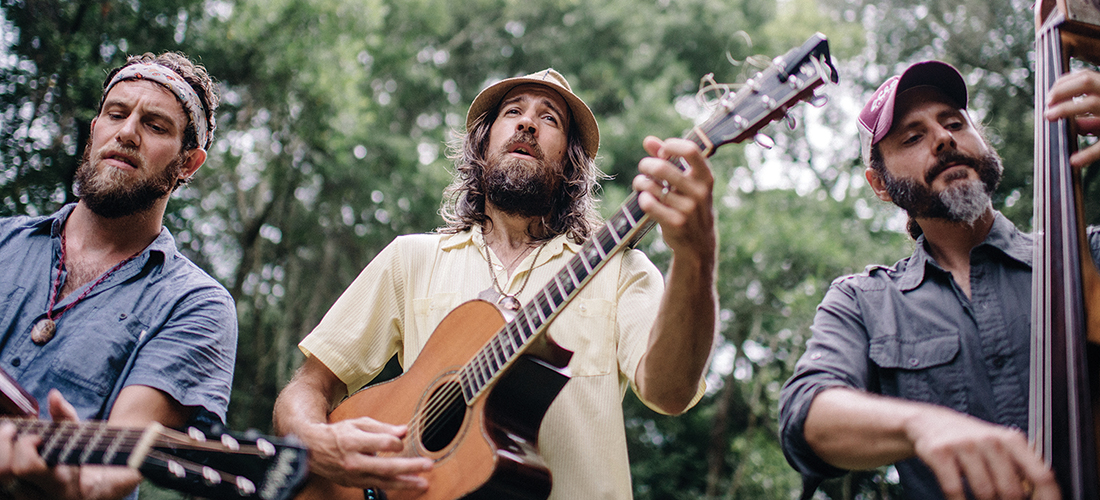First Friday
Dangermuffin takes the First Bank Stage at the Sunrise Theater on Sept. 7 from 5-8:15 p.m. for this free, family-friendly event featuring live music, good food and cold beverages. Bring the kids, but please leave the dogs at home. Should there be inclement weather, the band will move inside the Sunrise Theater, 250 N.W. Broad St., Southern Pines, and party on.
Curtis Strange and the Ryder Cup
The Given Tufts fall colloquium on Thursday, Sept. 6, features World Golf Hall of Fame member Curtis Strange, who will give golf fans a look behind-the-scenes in preparation for the 2018 Ryder Cup matches. Strange, the back-to-back winner of the 1988-89 U.S. Opens, was a five-time Ryder Cup player and captain of the 2002 U.S. team. In his role as an on-the-ground reporter for Fox Sports, he knows the current U.S. and European team members intimately. The 6:30 p.m. dinner will be in the Grand Ballroom of the Carolina Hotel, 80 Carolina Vista Drive, Pinehurst, with a reception beginning at 5:30 p.m. Tickets are $100 and available at the Tufts Archives, 160 Cherokee Road, Pinehurst, or online at www.giventufts.org. Sales close Sept. 4.

Supper on the Grounds
Enjoy BBQ with all the fixin’s, wine, iced tea and live music at the Weymouth Center for the Arts and Humanities on Friday, Sept.14. Cost is $20 for members; $30 for non-members. Kids 6-14 are $10; 5 and under free. The Weymouth Center is at 555 E. Connecticut Ave., Southern Pines. For further information call (910) 692-6261 or visit weymouthcenter.org.
Live After 5
Pinehurst’s Village Green rocks on Friday, Sept.14, with the Live After 5 performances of Lauren Light from 5:15-5:50 p.m., followed by Liquid Pleasure from 6-9 p.m. There will be food trucks and activities for the kids. Picnic baskets are allowed but no outside alcoholic beverages, please. Free and open to the public, the concert is at Tufts Memorial Park, 1 Village Green Road W., Pinehurst. For information call (910) 295-2817 or visit www.vopn.org.

A Rodgers and Hammerstein Spectacular
Sandhills Repertory Theatre presents the off-Broadway smash A Grand Night for Singing, bringing to life over 30 of the most-beloved tunes of the legendary Richard Rodgers and Oscar Hammerstein in three performances from Sept. 21-23 at the Hannah Theater Center at The O’Neal School, 3300 Airport Road, Southern Pines. The cast of five Broadway actors includes Christina DeCicco and Matt Leisy. Friday and Saturday show times are 7:30 p.m. with Sunday’s matinee beginning at 2 p.m. Advance purchase general admission is $35; $32 for seniors and military; $20 for students. Tickets at the door are $40. Purchase tickets online at www.sandhillsrep.org or www.ticketmesandhills.com. Senior and military tickets are also available at the Given Memorial Library in Pinehurst and The Country Bookshop in Southern Pines.
The Man in Black
Todd Allen Herendeen and the FTD Band highlight an evening of country music celebrating Johnny Cash on Saturday, Sept. 22, from 6:30-9:30 p.m. at the Southern Pines Brewing Company, 565 Air Tool Drive E., Southern Pines. Tickets are $25 in advance; $30 at the door. Children 12 and under admitted free. For more information call (910) 365-9890 or go to visionformoore.com.

You Gotta Try this One
Sip and sample beers from all over North Carolina at the third annual Pours in the Pines beer festival Saturday, Sept. 22, from 2-6 p.m. in the rolling meadow at the Weymouth Center for Arts and Humanities, 555 E. Connecticut Ave., Southern Pines. The event includes food trucks and music by McKenzie’s Mill. Sales benefit the Duskin & Stephens Foundation and the Southern Pines Rugby Club. Tickets can be purchased at www.eventbrite.come/e/pours-in-the-pines-tickets-25548052914.

The Rooster’s Wife
Saturday, Sept. 8: Stray Local, album release party. Art-inspired music from this Wilmington-based indie band, presenting their brand new album to start the fall season. Cost: $10.
Thursday, Sept. 13: Open Mic, with the Parsons. Members are admitted free.
Sunday, Sept. 16: Lula Wiles, Fireside Collective. Blazing a name for themselves with their progressive approach to American folk music, Fireside Collective delights listeners with memorable melodies and contemporary songwriting. Lula Wiles is a band deeply rooted in traditional folk music, but equally devoted to modern songcraft, from old-school honky-tonk to modern grit, all in three-part harmony. Cost: $15.
Friday, Sept.21: Emily Scott Robinson, T’Monde. Emily Scott Robinson is an important emerging voice in Americana, and a finalist in the 2018 Rocky Mountain Folks Fest. T’Monde is an Acadian phenomenon, a creative fusion of classic country and out-of-the-way Cajun. Cost: $15.
Sunday, Sept. 23: Howard Levy and Chris Siebold. Multiple Grammy Award-winner Howard Levy is an acknowledged master of the diatonic harmonica, a superb pianist, innovative composer, recording artist, bandleader, teacher and producer. He brings the equally talented guitarist Chris Siebold to Aberdeen for the first time. Cost: $20.
Sunday, Sept. 30: Eric Brace, Peter Cooper and Thomm Juste. Eric, Peter, and Thomm all have something distinct and slightly skewed to say about the world. When they bring their singular perspectives to the trio table, it’s a perfect example of a whole being much greater than the sum of its parts. Cost: $20.
Doors open at 6 p.m. and music begins at 6:46 at the Poplar Knight Spot, 114 Knight St., Aberdeen. Prices above are for members. Annual memberships are $5 and available online or at the door. For more information call (910) 944-7502 or visit www.theroosterswife.org.










